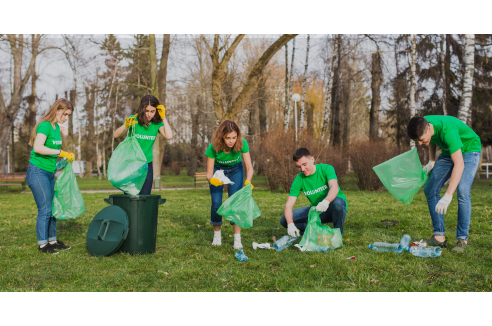Hoarding disorder is a complex mental health condition that impacts many individuals worldwide. It involves persistent difficulty discarding possessions, regardless of their value or usefulness. Over time, this behavior leads to excessive accumulation of clutter, creating an overwhelming and potentially hazardous living environment. Understanding the 5 stages of hoarding is crucial for recognizing signs, seeking timely intervention, and facilitating recovery.
Stage 1: Minimal Hoarding
The first stage from the 5 levels of hoarding represents a very tidy and organized living environment. Cleanliness and orderliness are clearly evident throughout the home.
Key Characteristics:
- Living spaces are easily accessible, and exits are not obstructed.
- No significant plumbing or electrical issues or any existing problems can be easily resolved.
- The home appears well-maintained and properly ventilated.
- No presence of mold or an excessive number of pets.
This stage depicts a typical level of household clutter and disorganization that most people experience in their day-to-day lives. Regular cleaning and organization can keep the home at this manageable level, ensuring a comfortable and safe living space.Read more: The Hoarding Cleanup Guide: Cleaning A Hoarder’s House: Step-By-Step Guide


Stage 2: Mild Hoarding
This stage from 5 levels of hoarding is characterized by a gradual buildup of possessions that may seem harmless or justified initially. However, it’s important to catch the signs early. Signs include:
- Acquiring and keeping an increasing number of items perceived as valuable, useful, or unique like books, magazines, clothes, or knick-knacks
- Holding onto expired coupons, old mail, papers, receipts, and records by telling yourself “Just in case you need them later”
- Struggling to throw away broken appliances, electronics, furniture, or worn-out possessions
- Justifying the need to keep items for sentimental reasons like gifts, inheritances, or childhood mementos
- Rationalizing that something may be needed or have a purpose in the future
It’s important to honestly examine thoughts and emotions driving the behavior, and seek professional help before the hoarding escalates.
Read More: How to Help a Hoarder Parent? 5 Steps to Take Right Now
Stage 3: Moderate Hoarding
As the hoarding behavior progresses into the moderate stage, the accumulation becomes more noticeable and problematic. Signs include:
- Rooms, basements, attics, and garages become cluttered or difficult to access or navigate
- Excessive buildup and inability to discard specific categories like old newspapers, magazines, clothes, or collectibles
- Increasing difficulty in keeping living spaces organized and maintaining the home’s functionality
- Minimizing the scope of clutter, or denying that it is creating issues or needs to be addressed
Intervention from concerned family members, friends, landlords, or professionals may be needed to prevent further escalation and eliminate potential safety hazards.
Need Hoarding Cleanup? We’re Just a Call Away
& Ready to Respond Quickly!

Stage 4: Severe Hoarding
In the severe stage of hoarding, the vast accumulation of possessions has reached a critical point that significantly impairs daily functioning and well-being. Common signs are:
- Nearly every room or living space is filled with clutter and only narrow pathways to walk
- Being unable to use rooms for their intended purposes like sleeping, bathing, cooking
- Potential fire hazards due to blocked windows, exits, or excessive combustible materials
- Health risks from inability to clean, poor sanitation, pest infestations, or mold growth
- Social isolation and strained relationships due to the failure to have company over
Professional intervention from specialized hoarding cleaning services, code enforcement, and a strong social support network are crucial at this severe level.
Read More: Professional Hoarding Cleanup Services


Stage 5: Extreme Hoarding
Extreme hoarding is the last stage out 5 stages of hoarding represents the most severe, dangerous, and life-threatening form of the disorder, posing imminent health and safety risks. Indications include:
- Structural damage to the home’s integrity due to excessive weight of collected items or moisture
- All entries, exits, and pathways are completely blocked, creating inescapable fire hazards
- Severe insect or rodent infestations, or hazardous materials like animal waste, rotting food
- Potential for evacuation, condemnation of the property, or legal intervention due to code violations
- Basic utilities like water and electricity are potentially being terminated due to the inability to access
In these extreme cases, intensive professional hoarding services, mental health crisis intervention, temporary relocation, and involvement of public safety authorities are often required immediately to mitigate risks.
Recovering from Hoarding Disorder
While challenging, recovering from hoarding disorder is possible with comprehensive treatment, ongoing support systems, and commitment to lasting lifestyle changes. Key aspects include:
- Developing healthier habits, mindsets, and personal rules around acquiring, reason for keeping, and disposing of possessions
- Implementing scheduled decluttering routines with the aid of coaches to sort, organize, and remove unnecessary items
- Addressing underlying mental health issues, emotional attachments, need for control, perfectionism, or trauma that drives hoarding through therapy
- Learning coping skills for anxiety, indecisiveness, and strategies to avoid backsliding or recurrence
- Building a support system of accountability partners, professional organizers, and hoarding specialists
- Maintaining motivation by celebrating small victories, accepting setbacks, reinforcing progress, and adjusting treatment as needed.
Professional Hoarding Cleanup Cost
- Most professional hoarding cleanup companies charge hourly rates that can range from $60-$150+ per hour per crew member.
- For a small one-bedroom apartment piled with hoarded items, costs may start around $3,000 but can easily exceed $10,000.
- For a larger single-family home with hoarding in multiple rooms, costs of $25,000-$60,000 or more are not uncommon.
- Additional fees may apply for disposal of truckloads of hoarded items, hazardous waste removal, pest control, and repairs/restoration after cleaning.
- Extended deep cleaning and sanitizing are usually required, adding significantly to labor costs.
- Having professional mental health counselors involved during the process also increases costs.
- Insurance may provide some coverage depending on the policy, but hoarding cleanups are often paid out-of-pocket.
- Getting free help from family/friends can reduce costs but is extremely difficult given the physical and emotional challenges.
Conclusion
Individuals affected by hoarding disorder can regain control over their living environments and overall well-being through immense patience, courage, and compassionate professional guidance. By spreading awareness more people can find access to the support they need.
